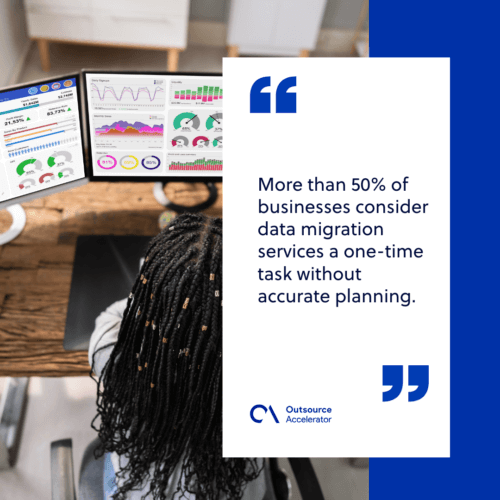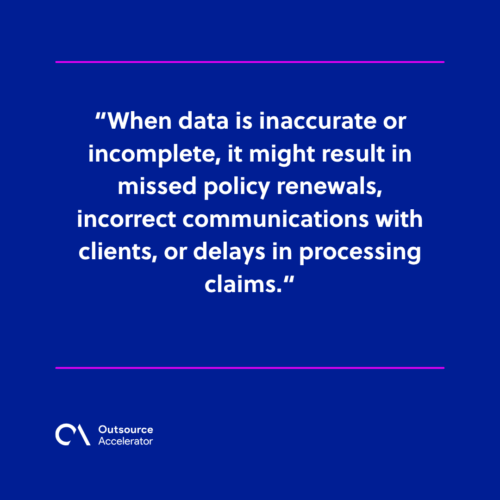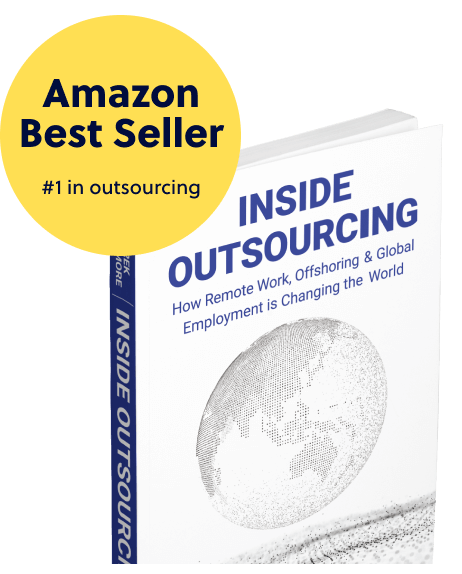Top data migration mistakes insurance businesses make (and how professional services help avoid them)

This article is a submission by Fusion Business Solution (P) Ltd.-FBSPL. Fusion Business Solution (P) Ltd. (FBSPL) is a Udaipur, India-based company providing Business Process Outsourcing, management, consulting, and IT services, with operations in New York, USA.
Data migration is on the rise, and today, nearly every business is preparing to migrate their data to a new AMS.
In a rush to switch CRMs, adopt new accounting software, or move customer data to the cloud, businesses make some of the most common data migration mistakes. These errors end up costing them more than just lost data.
As a result, they experience disrupted service, lost sales, and compliance risks.
What’s more troubling is that most business owners don’t even realize these mistakes until it’s too late. They consider the data migration process as a drag and drop task due to which they end up with messy formatting, missing records, incompatible fields, and poor planning.
Fortunately, all these mistakes are avoidable, and that’s exactly what we share in this article.
We highlight the most common data migration mistakes to avoid and how to solve them. If you are also planning to migrate your data to a new system, read this before you make a move and avoid the common data migration challenges and risks that businesses often overlook.
5 common data migration mistakes to avoid + solutions
Without a clear path, rushing data migration might result in data loss, malfunctioning integrations, and expensive downtime.
This section outlines five of the most typical data migration mistakes small businesses make and offers the best data migration solutions to help them avoid them.
Mistake 1 – No data migration plan or roadmap
More than 50% of businesses consider data migration services a one-time task without accurate planning. They frequently neglect to establish precise goals, specify success standards, or recognize potential threats.
As a result, they experience missed deadlines, unforeseen system problems, and inadequate team coordination.

How to fix it?
Create a thorough data migration plan that includes objectives, delegated tasks, deadlines, risk management, and contingency plans. It will save you from making the most significant data migration errors.
Mistake 2 – Migrating data without data cleansing
Companies frequently relocate all of their data from outdated systems because they believe it is safer to migrate everything. However, older systems typically contain broken files, duplicate records, out-of-date contacts, and excessive clutter.
When this “dirty data” is migrated, the new system becomes slower and less effective.
How to fix it?
Before data migration, audit your data, eliminate duplicates, standardize formats, and only move correct and usable data.
Mistake 3 – Skipping post-migration validation
Right after migrating the data, many businesses jump into using the new system without checking whether every piece of data was moved correctly. However, until data integrity is confirmed, the migration is not finished.
As a result, errors, including missing entries, broken links, or incorrect values, go undetected. This data migration mistake affects reporting, client relations, and compliance.
How to fix it?
Conduct post-migration validation using real-world use cases and automated reconciliation tools to verify data accuracy.
Mistake 4 – Poor data mapping between old and new systems
Data fields in the old and new systems are rarely the same. The source system may label fields differently, use different data types, or store data in a format that the new system doesn’t support.
This results in incomplete records, broken search filters, and mismatched customer data, leaving customers frustrated.
How to fix it?
Conduct detailed field-to-field mapping and use ETL tools to transform all the essential data required before migration.
Mistake 5 – Not training teams on the new system
Even after successful data migration, businesses fall flat when the employees are not well-versed in using the system effectively. The ROI of the overall data transfer may be less if users reject adoption, make mistakes, or go back to outdated workarounds.
New tools frequently have different functionality, UI designs, or workflows. Consumers find it difficult to complete even simple activities without training, and their productivity suffers.
How to fix it?
Plan hands-on expert training, offer detailed instructions, and designate an internal team to assist team members after data migration.
This is particularly crucial for industries like insurance where training plays a crucial role in ensuring efficient insurance agency optimization.
Hidden cost of poor data migration in insurance
Many insurance companies tend to treat data migration as just another to-do list. However, digging a little deeper, you’ll find that even small mistakes during the migration can cost you a lot.
Let’s understand the hidden cost of a poorly managed data migration:
1. Compliant and regulatory risk
Your crucial business data like licensing information, audit logs or claims history aren’t migrating correctly; your business may fail to meet regulatory standards.
As a result, your business will have to pay a considerable cost for not adhering to industry standards and the latest rules and regulations.
2. Client experience disruption
It turns out that 89% of CFOs make decisions based on inaccurate data.
When data is inaccurate or incomplete, it might result in missed policy renewals, incorrect communications with clients, or delays in processing claims. This further largely further disrupts the client experience, affecting the business reputation.

3. Lost business productivity
After migration, dealing with issues can sap internal resources. Employees may spend precious time fixing errors that could have been better spent serving clients or driving revenue.
4. Affected brand’s reputation
Your clients might not be aware that you’ve switched systems, but they will certainly notice mistakes. For instance, incorrect invoices, duplicate emails, slow responses, or poor data quality can tarnish your brand’s reputation and lead to client dissatisfaction.
5. Hidden IT and support costs
Overlooked data mappings, integration problems, or API glitches often necessitate custom solutions after data migration.
Whether it involves hiring extra IT support, buying new software, or extending consulting hours, these unexpected expenses can quickly blow up your initial migration budget.
A hands-on approach to data migration
Successful data migration involves more than just data transfers; it also involves maintaining system performance, customer trust, and business continuity.
Many business owners underestimate the complexity involved, which results in data migration mistakes that could have been easily prevented with proper planning.
Poor data mapping, hasty decisions, or failure to train a team are just a few examples of data migration mistakes that waste time and jeopardize the core of your digital operations.
Each problem can be resolved with proper planning, training, or even trusted data migration outsourcing support. Businesses can address these issues once they are aware of the above-mentioned data migration mistakes.
Besides this, if you are planning to get hands-on approach, hands-on approach, our step-by-step guide for insurance data migration is a good place to start.







 Independent
Independent




